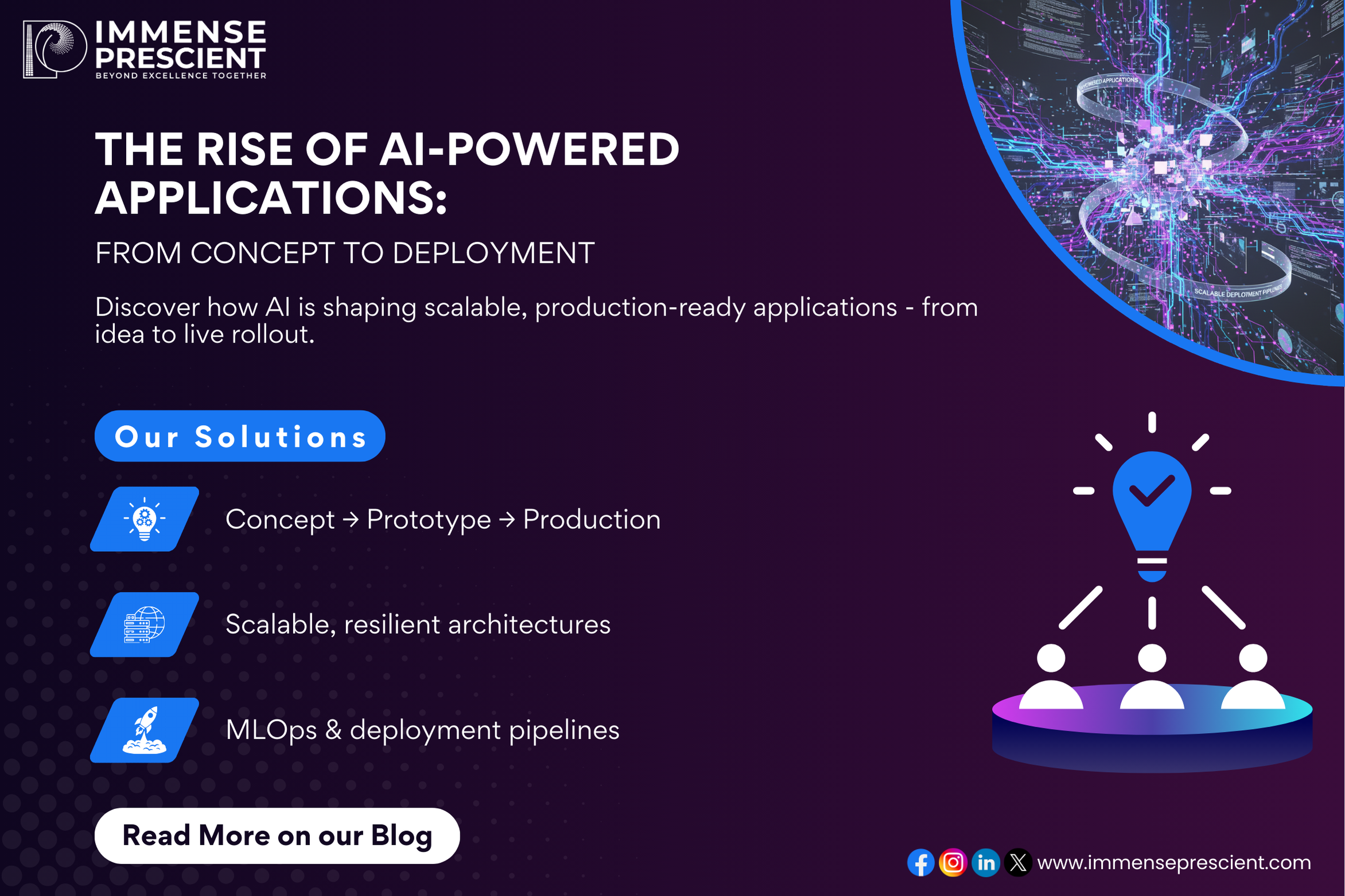The Rise of AI-Powered Applications: From Concept to Deployment
Introduction – AI-powered applications
Artificial Intelligence (AI) has moved beyond buzzword status to become the backbone of modern digital transformation. From personalized recommendations to predictive analytics, AI-powered applications are now shaping the way businesses deliver value. But how exactly do these applications evolve from concept to deployment? This article breaks down the journey, offering insights, tools, and best practices for leaders and technologists alike.
1. Ideation: Identifying Opportunities for AI
The first step in developing AI-powered applications is to identify high-impact opportunities. This requires analyzing business processes, customer pain points, and available data.
- Tip: Begin with a proof-of-concept (PoC) that focuses on measurable outcomes.
- Example: Retailers leverage AI to optimize inventory, while financial firms use AI to detect fraud.
🔗 Why IT Leaders Must Become Business Leaders
🔗 Gartner on AI Use Cases
2. Data: The Fuel of AI
Data quality and quantity directly influence AI performance. Companies must build robust pipelines to collect, clean, and label data.
- Use scalable cloud storage to manage large datasets.
- Invest in tools like data versioning and feature stores for consistency.
🔗 The Role of Cloud in Accelerating AI Adoption
🔗 Google Cloud AI Solutions
3. Model Development: Choosing the Right Algorithms
Building an effective AI model involves:
- Selecting the right algorithm (ML, deep learning, NLP, etc.).
- Using pre-trained models or open-source frameworks (TensorFlow, PyTorch).
- Iterative testing to ensure accuracy and fairness.
🔗 TensorFlow Open Source Platform
4. Deployment: From Lab to Live
Deploying an AI-powered application at scale requires robust infrastructure and continuous monitoring.
- Use MLOps (Machine Learning Operations) to automate deployment and updates.
- Integrate CI/CD pipelines to reduce downtime and ensure performance consistency.
🔗 Unlocking Scalability: Cloud as the New Business Backbone
5. Governance & Ethics: Building Trust
AI ethics is no longer optional. Applications must address:
- Data privacy and security.
- Bias mitigation.
- Transparent decision-making.
🔗 Digital Trust Will Define the Next Decade of Business
🔗 OECD AI Principles
Conclusion: The Future of AI-Powered Applications
The rise of AI-powered applications signifies a new era of innovation. By strategically managing the journey from concept to deployment while maintaining ethical standards businesses can unlock new revenue streams and transform customer experiences.
Are you ready to build and deploy your own AI-powered applications? Contact Immense Prescient to explore how we can support your next project.




